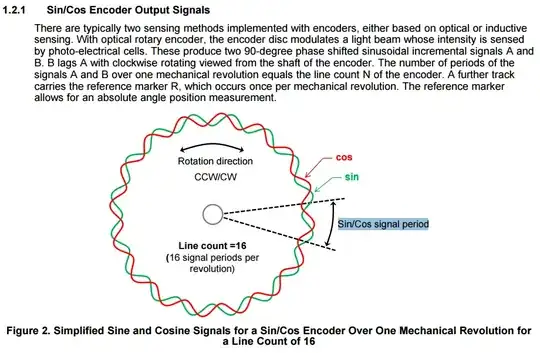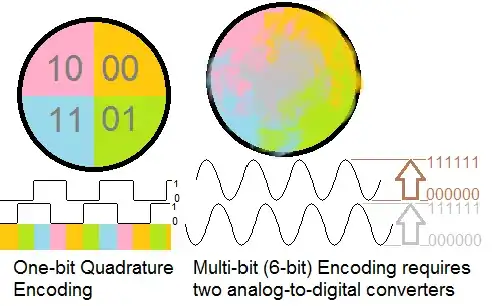Is it possible to explain the advantage of sin/cos encoder when used together with an incremental encoder? Here is a related paper but I don't understand how does it improve accuracy. I basically don't get what interpolation is and how does it help to improve the usual incremental decoding. I checked this but couldn't find a pictorial/graphical way to grasp the idea.
In a typical square-wave incremental encoder edges are counted and processed to obtain the rotation angle and direction or speed.
But these sin/cos encoders add an extra to this principle. They call it interpolation. Is it possible to explain how two sines and cosines are processes and contribute to the accuracy here? Simple graphical explanation would help a lot.

